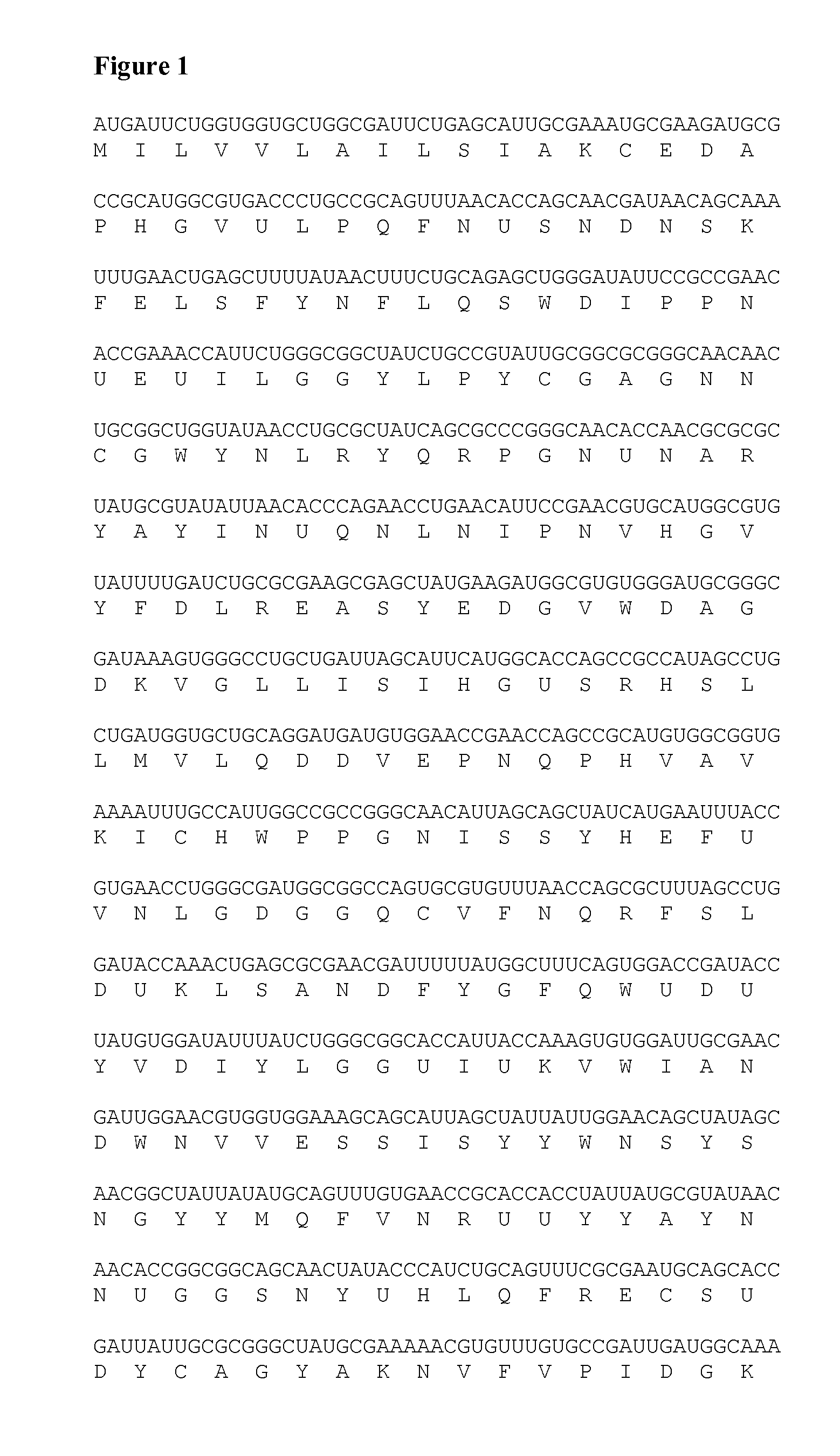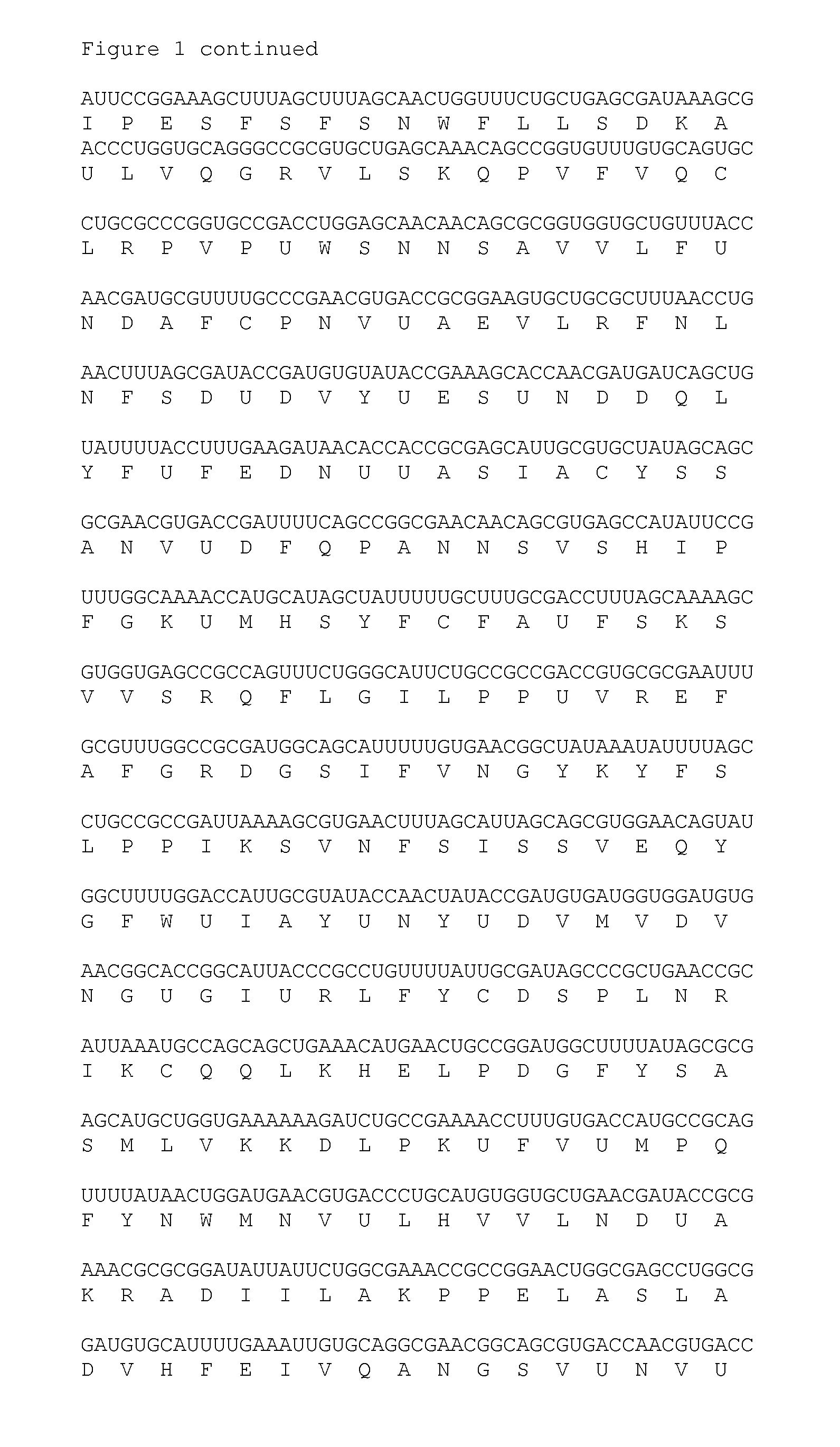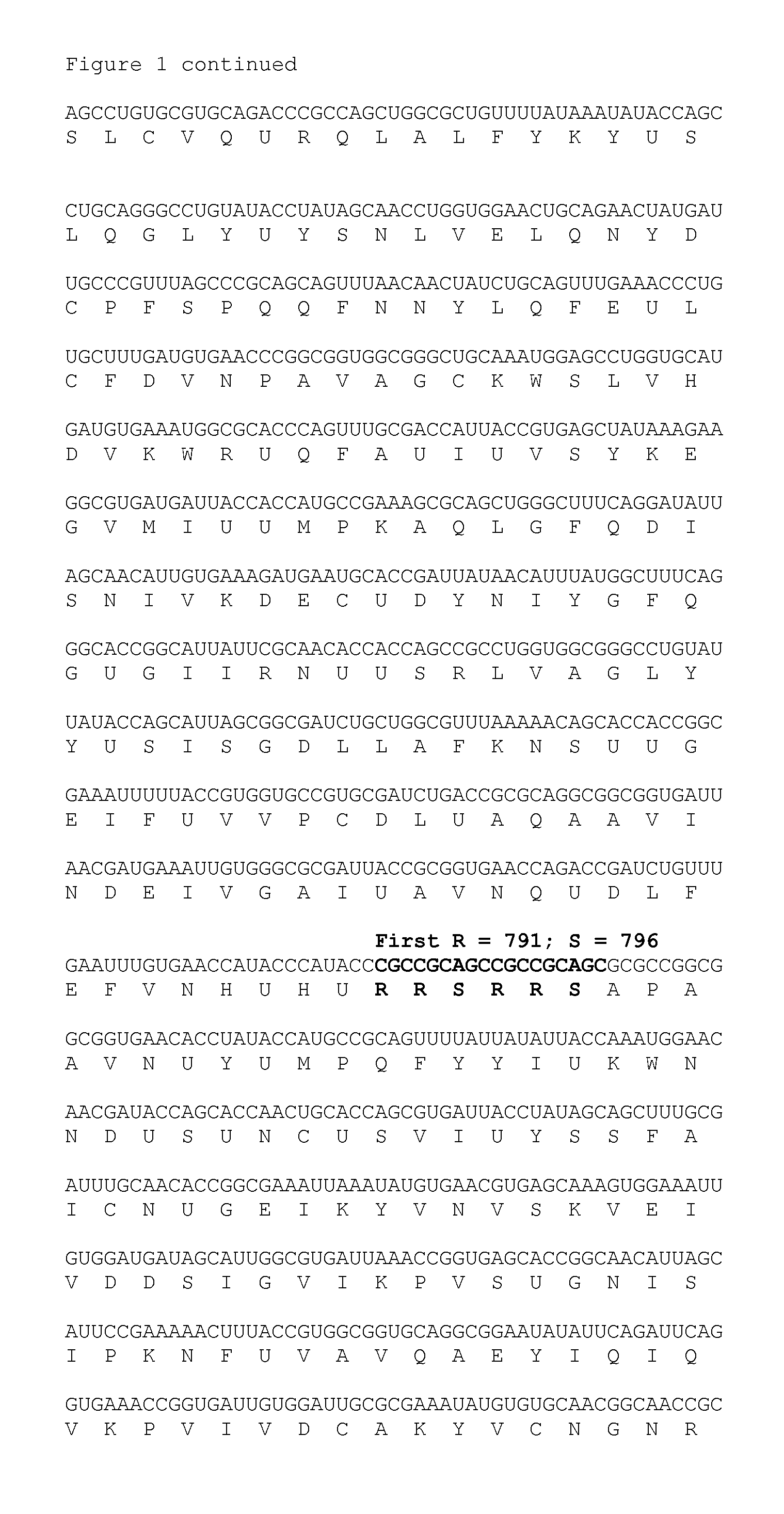Methods For Diagnosing Feline Coronavirus Infections
a feline coronavirus and feline infection technology, applied in the field of feline infectious peritonitis diagnosis, can solve the problems of posing fip risk to other cats, no effective treatment or vaccine for fip,
- Summary
- Abstract
- Description
- Claims
- Application Information
AI Technical Summary
Benefits of technology
Problems solved by technology
Method used
Image
Examples
Embodiment Construction
[0020]The present invention provides a method for determining whether a feline is infected with FIPV, FECV, or with neither FIPV nor FECV. The method comprises determining from a biological sample obtained or derived from a feline the presence or absence of a mutation in the S1 / S2 site, which is Arg Arg Ser Arg Arg Ser (SEQ ID NO:5) and determining the presence or absence of a mutation in the S2′ site, which is Xaa Xaa Ser Xaa Xaa Glu Asp Leu Leu Phe (SEQ ID NO:8), where Xaa Xaa in the first two positions of SEQ ID NO:8 are basic amino acids. The second two Xaa's in SEQ ID NO:8 (positions 4 and 5 of SEQ ID NO:8) can be any amino acid. In one embodiment, the amino acids in positions 4 and 5 of SEQ ID NO:8 are Ala and Val, respectively; in another embodiment, they are Thr and Val, respectively. These or any other changes in positions 4 and 5 of SEQ ID NO:8 are not considered mutations to the S2′ site for purposes of determining infection with FIPV or FECV. Accordingly, reference to a ...
PUM
| Property | Measurement | Unit |
|---|---|---|
| mass spectrometry | aaaaa | aaaaa |
| nucleic acid analysis | aaaaa | aaaaa |
| pH | aaaaa | aaaaa |
Abstract
Description
Claims
Application Information
 Login to View More
Login to View More - R&D
- Intellectual Property
- Life Sciences
- Materials
- Tech Scout
- Unparalleled Data Quality
- Higher Quality Content
- 60% Fewer Hallucinations
Browse by: Latest US Patents, China's latest patents, Technical Efficacy Thesaurus, Application Domain, Technology Topic, Popular Technical Reports.
© 2025 PatSnap. All rights reserved.Legal|Privacy policy|Modern Slavery Act Transparency Statement|Sitemap|About US| Contact US: help@patsnap.com



